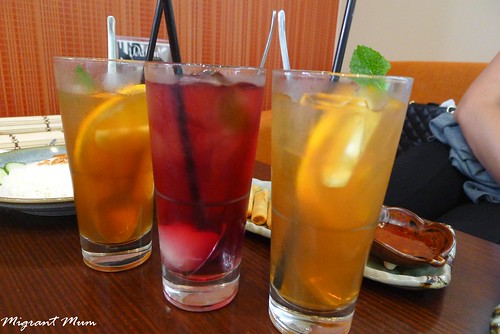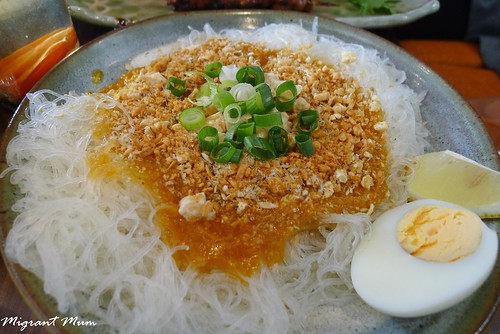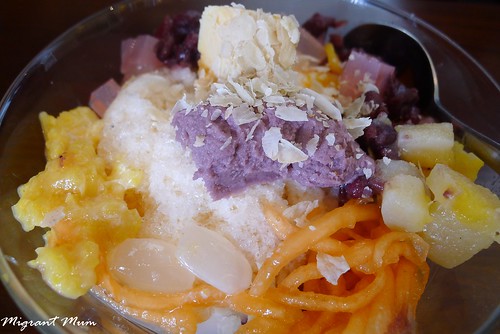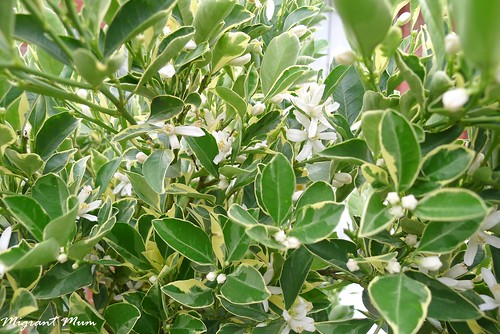One of the big hurdles faced by working parents is to find a suitable care arrangement that would work for their family. This is the same challenge we face. This is extremely difficult for migrants like me who do not have any immediate family nearby and who got used to having live-in nannies when growing up. In case you are not aware, even middle-income families can afford live-in nannies in the Philippines. In Australia, only the filthy rich can afford nannies.

Dress-up Day
There are different forms of care to choose from in Australia: (1) one of the parents, usually the mother, looks after the baby, (2) grandparents and friends, (3) babysitters and nannies, (4) family day care, (5) occasional care and (6) long day childcare centres. The government assists family with the cost of care. There is the childcare benefit, which reduces out of pocket costs depending on the household’s income, and the childcare rebate, which gives back 50% of out-of-pocket costs. I will not detail this information as it is best to get accurate information from the family assistance office website.
The family day care set-up is run and administered by the local council. Your kid will be looked after by a qualified early childhood educator, who at least finished a Certificate degree in Children Services, at his or her own premises together with 3 other non-school aged kids from 6 months to 5 years old. The fee is ranging from $6 to $9 per hour with a usual minimum booking of 6 hours per day. Parents provide the food, an assurance that your kids eat food they love, and everything the kids need personally like diapers, wipes, and nappy bags. But, all other materials related to their activities such as art and craft materials, musical instruments, and toys are all covered by the educator. Because of the smaller group size, the educator is quite flexible to adapt the schedule and routine of your kid at home or depending on the kid’s needs on the day.
Occasional care is a form of care for those who needs care from time to time when you have appointments or just want a day for yourself.
In long day childcare, qualified early childhood educators look after the babies and the kids from as young as 6 weeks old to 5 years old before they start the big school. The baby’s room usually have 6 kids at a time with 2-3 educators looking after them. The toddlers room usually have 15 kids at a time with 4 educators. The 3 and 4 year old room usually have 15 kids at a time with 2-3 educators. Most childcare centres operate from 6:30 am to 6:30 pm, which is suitable for working parents who travel 45 minutes to an hour for work. Most childcare centres provide the food, that are gluten and nut free, nappies, and sunscreen. Most often bringing of food is not allowed to avoid food allergic reaction from occurring. Your kid will be exposed to different variety of cuisines. I am often surprised that Kimi eats and knows food that is not a regular food for traditional Filipino families such as ravioli and gnocchi. Healthy eating habits is also promoted among the kids. This could be a disadvantage, though, if you have a picky eater that would not really eat anything but bread and jam. In terms of schedule, your kid will learn the centre’s routine for grouping activities, playing, eating and resting.

Pretend play: I can build your house!
In our situation and after he was looked after by his grandparents interstate (an emotionally difficult situation that I would not like to happen again), we opted for a mix of family day care, childcare centre and stay at home at different stages to ensure that Kimi gets the right mix of social interaction and the much needed rest if he had a late night of playing with us to compensate for our absence during the day. When Kimi was 19 months, we started him off with 1 day at family day care and 4 days at home per work week. We increased this to 3 days a week in family day care and 2 days at home when he was 22 months. We changed his care to 3 days in family day care and 2 days in childcare when he was 24 months.
Childcare fees were getting expensive so when my request to work from home one Friday at fortnight was approved, we dropped his childcare days to 1 day per week, resulting in only 4 days of care per week when he was 30 months. Che and I took turns looking after Kimi during Fridays while friends assist during unavoidable circumstances. This set-up has substantially helped us financially.
There are pros and cons of putting your kid in childcare or day care. For sure, your kid will pick up the virus of other kids especially during the winter season so you will need to brace yourself for more days of caring for a sick kid - the usual cough and cold. But, the positive side of this is your kid will build the immune system earlier in life than kids who will only be exposed to other kids when they get to school. You will be surprised that your kid will learn words and phrases that you don’t use at home. These, however, are not only the nice but the naughty too words too. They are unavoidable. So, you will have to work harder at emphasising the proper behaviour at home. Your kid will learn to share and negotiate as he will regularly do this with other kids so don’t be surprised that he will start negotiating with you as well. And the most important of all, your kid will develop emotional and social skills without much effort on your part.
If you decide to put your kid in childcare, ask friends and colleagues for recommendations, make a surprise visit so you can see them in action with no preparations, observe the kids if they are content and happy, check the toilets as this is a good indicator of overall cleanliness, look at the play area and see if there are any hazards, review the centre’s philosophy and curriculum, and keep an eye on what the educators are doing and how they respond and treat the kids. Trust your instincts. You will feel it during the first visit if the place is for your child and if it is worth doing a trial session.
Yes, it costs a leg and an arm. But, I will still put my son in childcare even if we can have a live-in nanny similar to what I had growing up in the Philippines or even if I can opt to stay at home full time – not for four days though.
How about you? Will you put your kid in childcare as well after my sharing? Do you have any tips on choosing the right day care?













